I remember my father waking me late at night and driving me to Bradford Reservoir—the darkest place he could find in Bucks County, Pennsylvania—to try to show off the Perseid meteor showers to a 7-year-old me in the early 90s. He tried again each August and, as exciting as it was to take this nocturnal adventure with my dad, I don’t remember ever seeing more than one or two meteors. I now live in New York City and am lucky if I can see even three stars on a clear night, so I don’t even try to witness the astronomical events that always seem to go viral on social media, but I’ve often wondered why we had such poor luck in Pennsylvania, in a park, far from manmade light. Not being able to see lamp posts or houses nearby didn’t mean I was far from light. In fact, 80% of Americans live in areas with light pollution, and I never really had a chance. This summer, nearly 30 years later, that changed for me.
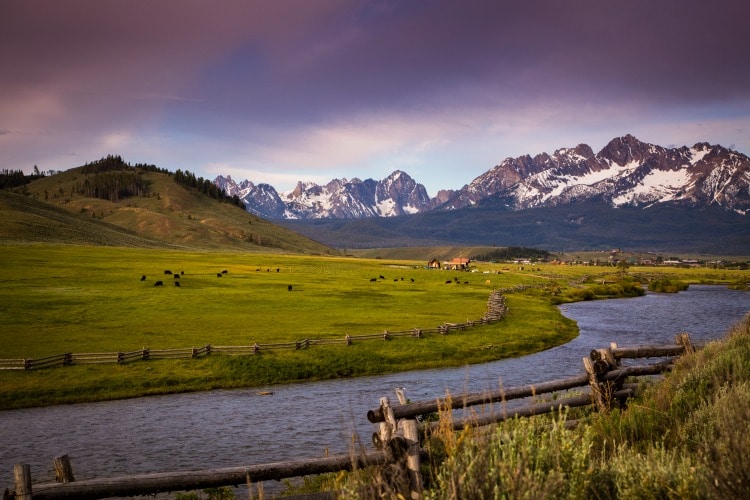
Central Idaho Dark Sky Reserve
Deep in Idaho, 90 miles east of Boise, is the Central Idaho Dark Sky Reserve. Certified by the International Dark-Sky Association, it’s one of only thirteen in the world and the only one in the US. Accreditation requires compliance with a 19-page list of parameters, but is essentially based on exceptional sky quality and natural darkness, and reserves must include a protected core surrounded by populated communities that support the core’s preservation. Central Idaho’s is a 1,416 square mile area that comprises Ketchum (itself a Dark Sky Community since 2017), Sun Valley, and Stanley. Closer to home than other far-flung reserves like those in Namibia or New Zealand, I hopped a flight to Boise this August in search of shooting stars.
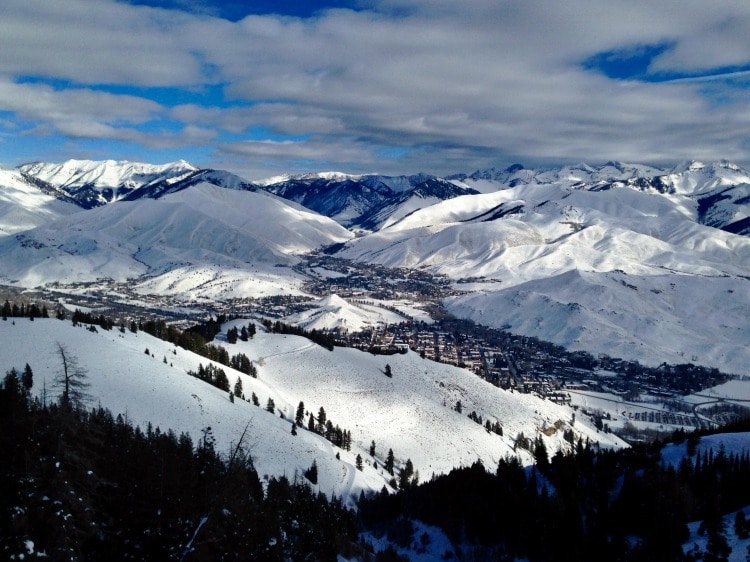
An Eco-Friendly Drive
My arrival left me about 2.5 hours from Ketchum, where I’d base myself for my star search. A dark sky reserve depends not just on a lack of light pollution, but other environmental factors like air purity (you actually need to be able to see the dark sky, so air pollution is no good either), so the Chevy Bolt EV, the first all-electric vehicle from Chevy, felt like the right choice to get me to, from, and around Ketchum. Admittedly, I’d never driven an electric vehicle before, so I didn’t even know how or where to charge one, but I was told the car would go up to 238 miles on a single charge and my route was only 155. It turns out they can be charged at charging stations (there’s an app for locating them), at any standard outlet in a house/garage, or even at a large appliance outlet (like for a washing machine) for a quicker charge.
Central Idaho is high desert territory, so the drive from Boise to Ketchum was an intriguing scenic blend of desert, prairie, rolling hills, and mountains punctuated by the occasional cattle or horse farm. The drive passed almost too quickly for a city boy taking in these sprawling views, but my cell phone found the day of travel draining and needed to be charged. The Bolt EV’s wireless charging capability immediately became my favorite feature, however simple, and I still find myself wishing my own car (and the entire NYC subway system) had it.
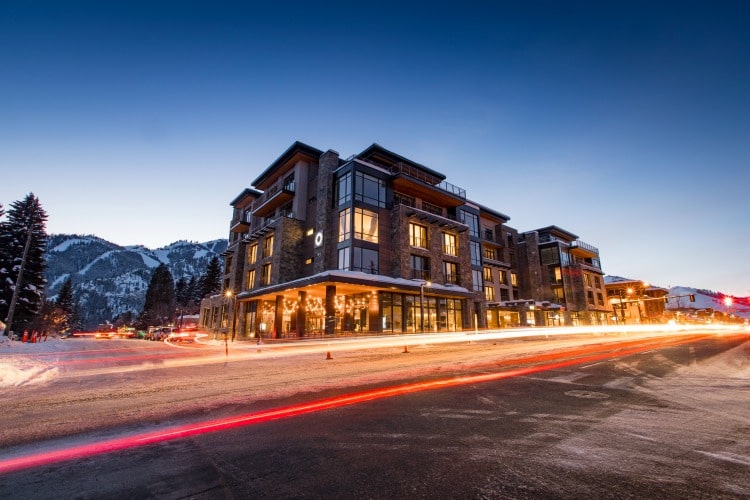
An Eco-Friendly Stay
In winter, Ketchum is a ski town. In warmer weather, it’s a fishing, hiking, and all-around outdoor destination. A short stay at the Limelight Hotel was like checking into the heart of Ketchum, where guests had similar aspirations of seeking adventure, healthy living, and protecting the coveted land, water, and air of Central Idaho. The Limelight captures and filters 100% of stormwater to protect the Wood River, uses environmentally-friendly cleaning products, and sources at least 15% of its restaurant ingredients locally. Recycling bins are provided in each room, and its commitment to reducing waste extends beyond the cultural obsession with minimizing the use of plastic straws (which it also does). Dramatic reduction of plastic waste is achieved by providing toiletries in bulk dispensers instead of tiny, individual bottles, and stocking canned beverages instead of glass-bottled drinks because the region is low on glass recycling facilities. A downside of frequent long-distance travel is that it increases my carbon footprint, but the combination of driving a Bolt EV and staying at the Limelight was a welcome relief to my internal guilt.
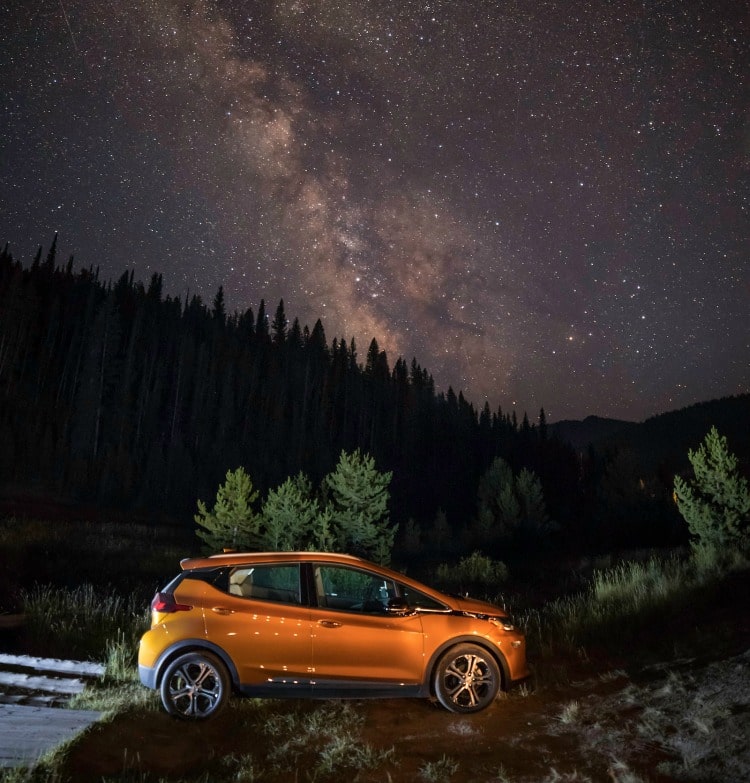
A Walk with Dr. Dark
Just a twenty-minute drive from the Limelight is Galena Lodge, and it was here that Dr. Dark guided a walk over the river and through the woods (okay, just a small creek) to an optimal vantage point for the Perseid showers, which can deliver 60-120 meteors per hour at the height of their awesome display. Dr. Dark, whose day-name is Dr. Stephen Pauley, was an astronomy obsessed, California-based ear, nose, and throat surgeon who played a major role in bringing about Central Idaho’s dark sky preservation by petitioning planning and zoning commissions in several townships and counties in the mid-90s. Ketchum was the first to come on board in 1999, and others have since followed, allowing the combined region to become designated as the gold-tier reserve it is today.
Ketchum may not hold the US record for greatest temperature swing in a single day, but on this day the change was noticeable. It was over 90° when I arrived early in the day, but the temperature had already dropped to 53° by the time we settled down for the spectacle. In spring, 53° feels great—a promise of warmer weather to come. But coming off of a 90° day and still in summer clothes, it was almost traumatizing. I should have planned ahead for this, but I wasn’t aware of just how quickly, and how steeply, the temperature would drop.
I lasted an hour in the “cold” outdoors, staring skyward. In total, about 25 meteors caught my eye that night but in an environment like this one, the shower wasn’t the most impressive element anyway. The sky was. The sheer volume of stars visible was mind-boggling, and I still can’t quite wrap my mind around the fact that it was real. The upward views in Ketchum resemble photographs from a 5th-grade science textbook, with images that I thought could only be found in space, and even then, not as dense with stars. And that’s to say nothing of the inspiring experience of seeing the cloudy form of the Milky Way with the naked eye for the first time. Though I had come all this way specifically to witness the Perseid showers, I came away more impressed by a sky I never knew was always there.
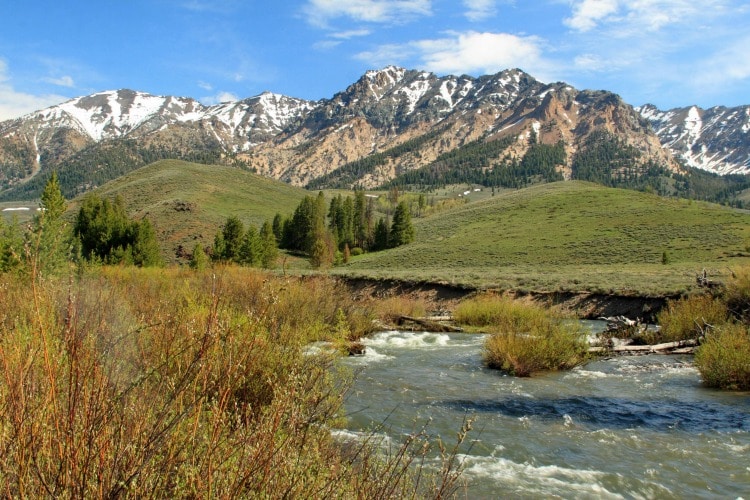
More Celestial Events
Temperatures drop much, much lower in Central Idaho in other seasons (well below freezing in winter), so I was glad to be visiting in August, but there are plenty of other celestial events worth witnessing here throughout the calendar. Each year brings events like equinoxes, eclipses, and planetary proximities that are best seen in a region like this, and lectures and workshops at Sawtooth Botanical Garden in Ketchum include star navigation, night sky photography (including taking cell phone photos) and identifying constellations. The Stanley Museum also hosts a lecture series provided by the Sawtooth Interpretive & Historical Association. All of these events, both natural and otherwise, can be found on the Central Idaho Dark Sky Reserve’s extensive event guides on its website.
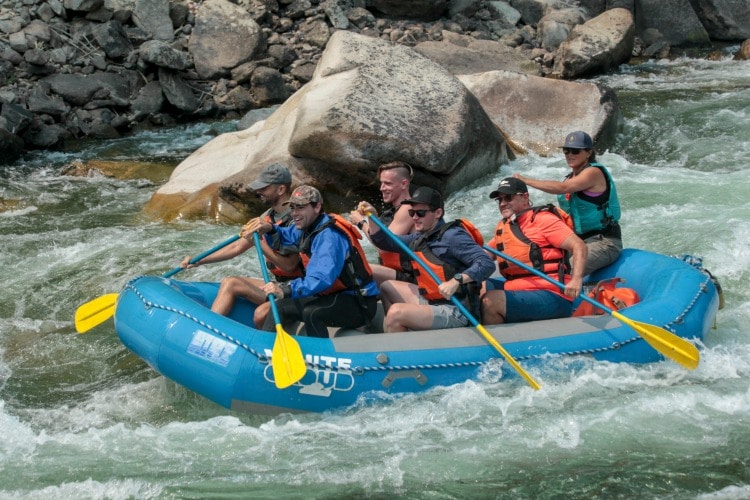
One More Idaho Experience
With my bucket list moment behind me, I opted for one more Idaho experience the next afternoon and took a river rafting excursion in nearby Stanley. Late summer is the calmest point in the rafting season here, with the snowpack melt providing the most intense rapids earlier in the season (up to Class IV), so this was more of a guided tour of the picturesque Salmon River with the occasional Class IIs to navigate. I saw a wolf, river otters, and colorful birds along the way, yet the most striking moment of the journey came not from nature, but from the guide, who asked, “So, which celebrities have you seen here so far?” The quaint town of Ketchum and its surroundings are well known to the jet set and celeb sightings are a fact of daily life, so the area is nearly as notable for its visiting movie stars as for its permanent twinkling stars. It seemed a little strange that she’d asked whom we’d seen instead of if we had seen anyone, but she wasn’t wrong. Jamie Lee Curtis was at dinner in the Town Square Tavern the night before.
[alert type=white]
The area code for Ketchum, Idaho is 208.
Where to Stay:
Limelight Hotel Ketchum – Located on Main Street with mountain views, Limelight is a quirky hotel with a youthful, adventurous spirit. Modern design with pops of color energizes and inspires in this perfect pad for people and their very welcome pets.
151 Main Street S, (855) 565-0985; www.limelighthotels.com
Sun Valley Lodge – Ideal for skiers, Sun Valley Lodge is the nation’s first destination ski resort and was recently renovated to enlarge and modernize its 108 guestrooms. After a day of exertion, take advantage of the 20,000 square foot spa facilities.
1 Sun Valley Road, (800) 786-8259; www.sunvalleylodge.com
Where to Eat:
Town Square Tavern – Mediterranean and Middle Eastern cuisines come together in this trendy eatery with a casual chic vibe. From Bucatini to Lamb Tagine, exotic flavors are yours for the tasting, but local dishes like Idaho trout are also worth sampling. Open daily for dinner, and Thursday-Sunday for lunch.
360 E Avenue N, (208) 726-6969; www.ketchumtavern.com
The Kneadery – Kitsch and quirk are king at this family-friendly favorite for breakfast and lunch. Step inside the cabin for locally sourced, seasonal ingredients, fresh baked bread, and the quality comfort food you miss from your grandmother’s kitchen.
260 Leadville Avenue N, (208) 726-9462; www.kneadery.com
[/alert]

